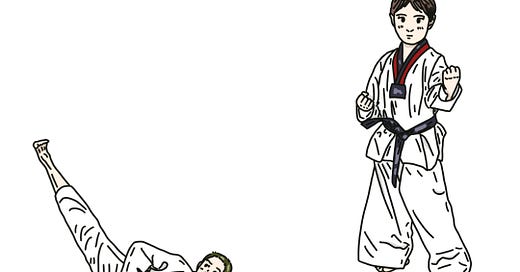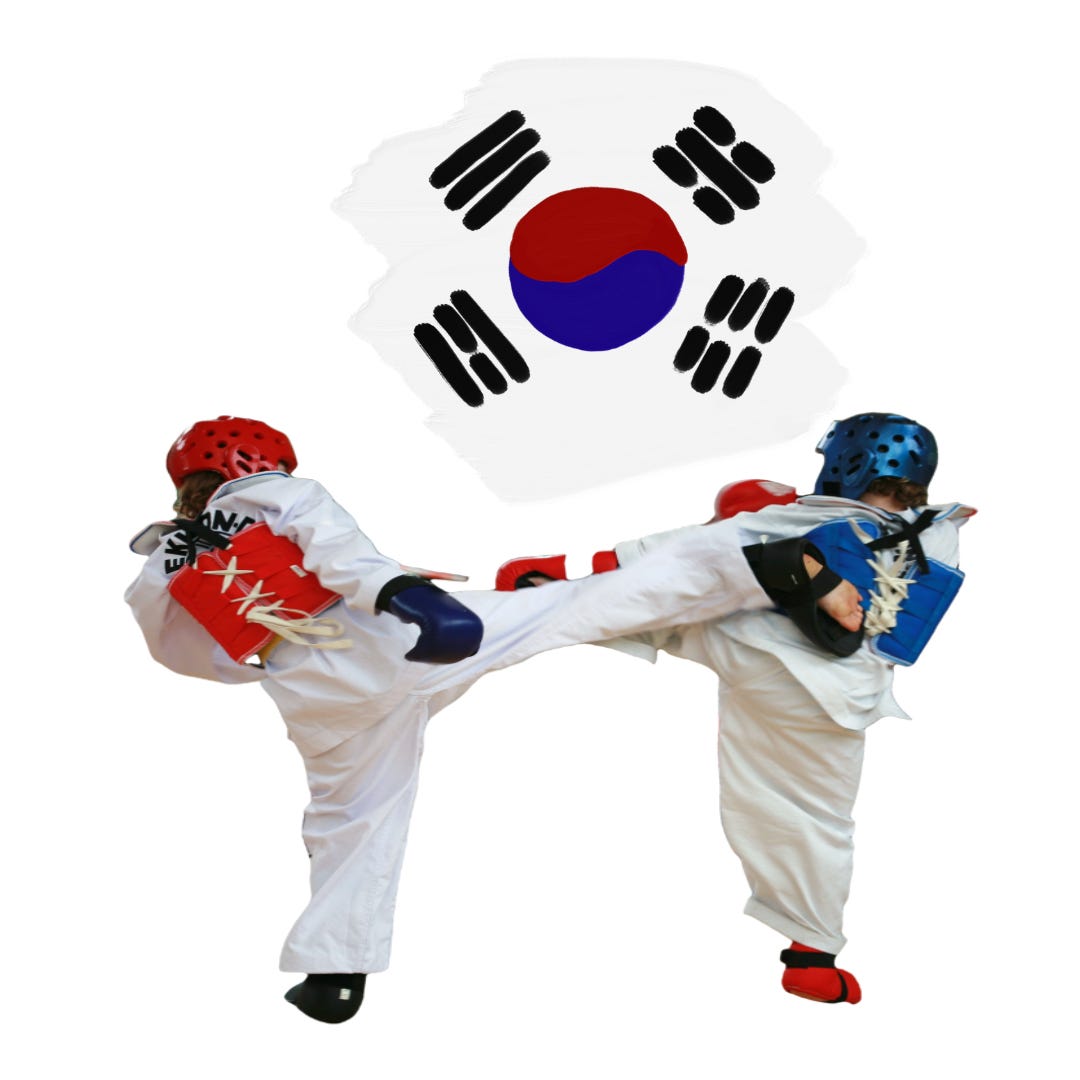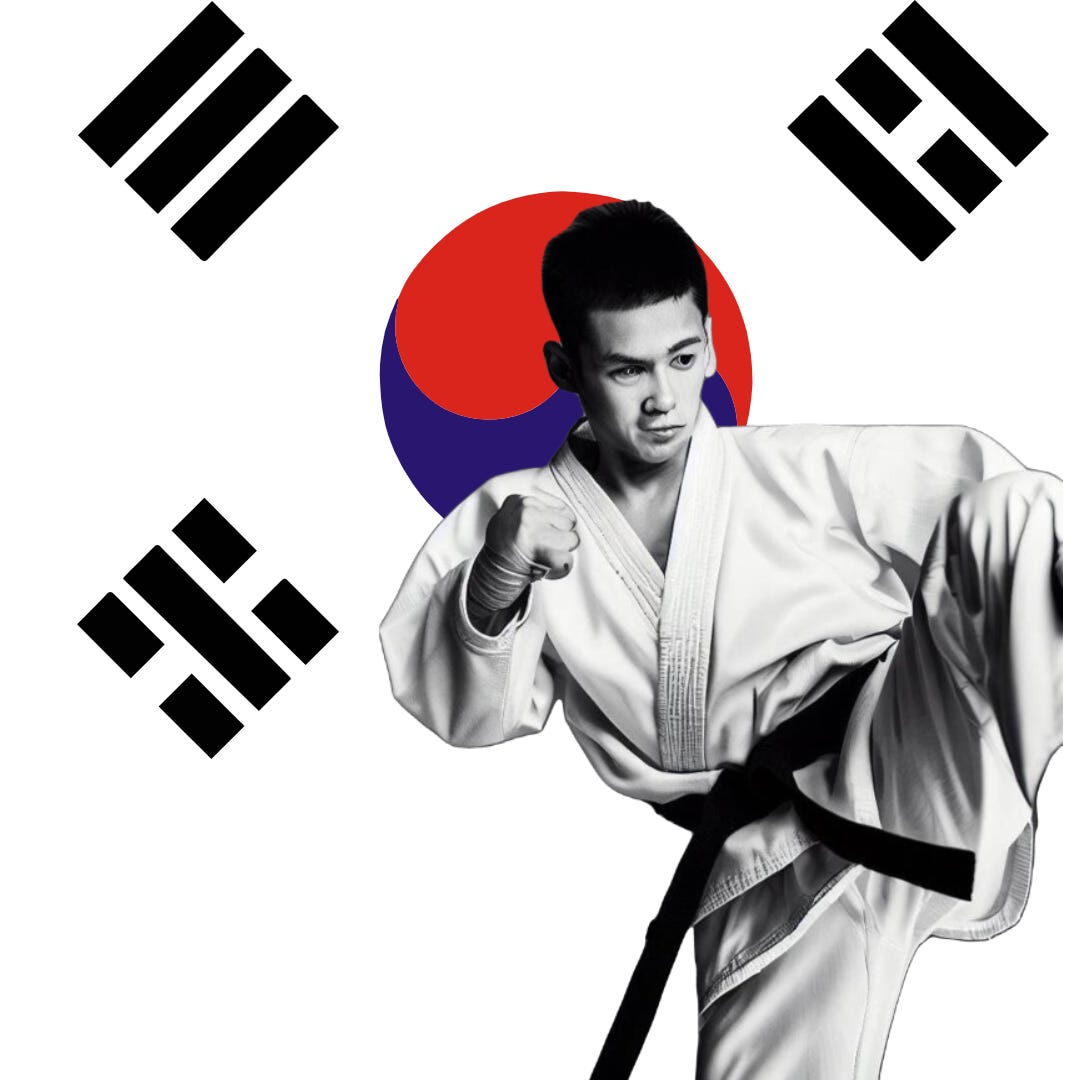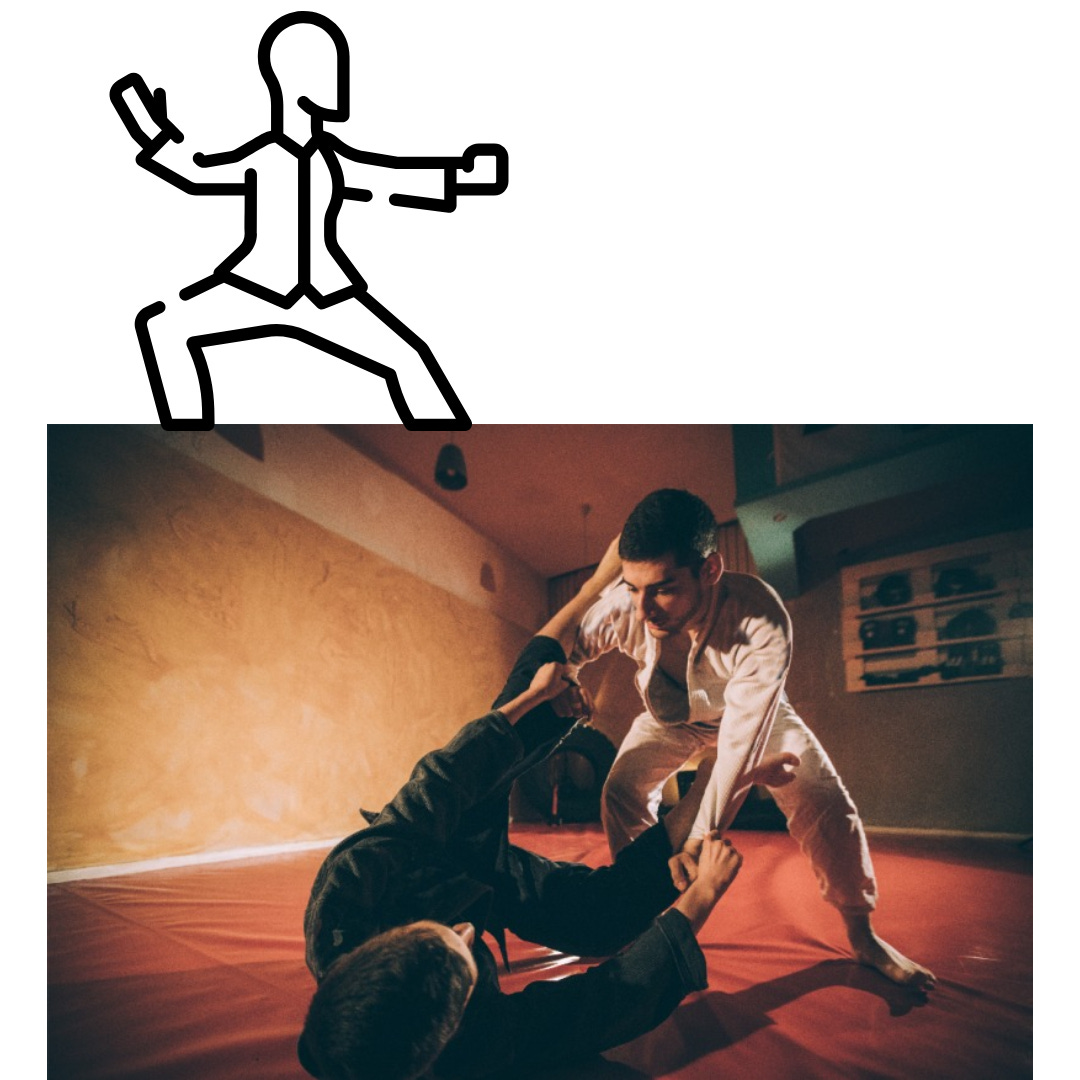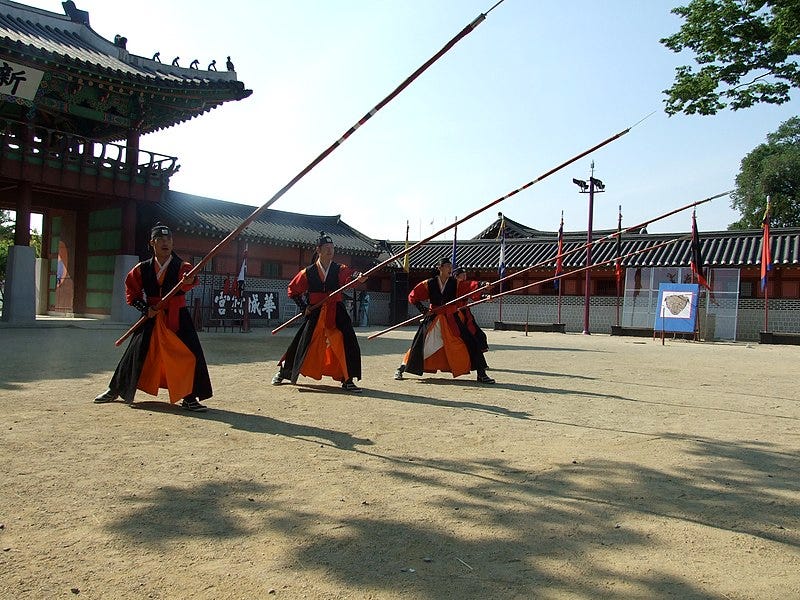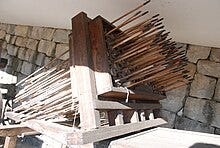Korean Kicks, Bows and Armor
Unveiling the Proud Heritage of Korean Martial Arts and Historical Weapons.
Hello again Like A Koreans,
We all hope you are doing well! We are in the last week of August and for those who are interested in becoming a Like A Korean student or current students who want to go to the next level, we are only running our early bird discount until September 1st. still have seats available. Also, for those you are beginners we have our level 1 classes to get you started in your Korean language learning. Click the link below to get more info or reserve your spot!
In this week's Like A Korean Academy’s newsletter, we look at Korea's rich martial arts history and historical weapons.
Korea has a long and interesting past that is like a rich tapestry made of threads of bravery, discipline, and tradition. All of these things can be seen in martial arts and old weapons. From the well-known martial art of Taekwondo to the less well-known but just as interesting old weapons, Korea's martial heritage is a testament to the country's deeply held values and strong will. In this week’s newsletter, we'll go on a journey to learn more about Korean martial arts and historical weapons, showing how important they are and how they have changed both the past and the present. Our adventure will take place from the very beginning of time to the present day.
Taekwondo
The most important part of Korea's long history of martial arts is thought to be Taekwondo, a form of self-defense that blends mental focus with physical skill. Taekwondo is a lively martial art that focuses on both self-defense and personal growth. The past of the country has had a big impact on this field, which has its roots in centuries-old customs. Its name comes from the words "tae" (kick with foot), "kwon" (punch with fist), and "do" (way), which together mean "the way to control one's body and mind."
The signature methods of taekwondo, like hard strikes and high-speed spinning kicks, show how versatile and effective the art is. Taekwondo is a martial art that has been around for hundreds of years. Its history shows how Korean society has changed over time. It used to be just a way to fight, but now it is an Olympic sport that people all over the world love. Taekwondo is a unique type of martial art because, in addition to improving physical skills, it puts a lot of emphasis on good qualities like respect, kindness, and honesty. This all-around method helps students not only get better at fighting, but also grow as people.
Beyond Taekwondo: A Look at the Many Other Korean Martial Arts
Even though Taekwondo is probably the most well-known Korean martial art, there are a number of other ways to train that, because of their historical and cultural significance, deserve equal attention.
Hapkido "A Dance of Harmony and Fluidity"
Hapkido is a complete martial art that focuses on joint locks, throws, and hits. It shows what it means to fight with unity and fluidity. It focuses on redirecting an opponent's energy and using it against them. This is a new way of thinking about self-defense that gives a new perspective on the subject. Hapkido isn't just about beating up your opponent; instead, it's about using your opponent's own strength to protect yourself against strikes.
Kumdo "The Way of the Sword"
The Korean art of Kumdo, which is similar to the Japanese art of Kendo, is based on the use of a bamboo sword, which is also called "jukdo," and shows how committed the Koreans are to the methodical practice of swordsmanship. Practitioners of this method can step into the minds of ancient fighters and connect with the lineage of their ancestors. Kudo doesn't just keep old fighting styles alive; it also teaches important life skills like patience, focus, and mental strength.
Korea's old weapons and armor are a window into the past.
In Korean history, there have been a lot of battles, and the weapons that were used during these times are a testament to how strong and creative the country is.
Geom
A traditional part of Korean weapons is the "geom," which is a sword with a single edge. Because of how beautiful it looks and how useful it is in close fighting, it has become a sign of good martial arts skills. Geom-based techniques have been passed down from one generation to the next, showing how useful and flexible these old tools are.
Jangchang
The "jangchang" is yet another important historical tool. The jangchang was a long spear that was usually used by soldiers. It took both physical strength and tactical skill to use it well. The courage of the soldiers who used this weapon on the battlefield shows in how it is remembered today. The jangchang is a classic Korean weapon that shows how close Korean soldiers are to each other. It also shows how strategic thinking is needed to use these kinds of tools in groups.
Gung
The Korean composite bow was a key tool on the battlefield because of how powerful and far it could shoot. Archery was important for more than just war; hunting and sports kept it alive through the ages.
Nangseon
The Nangseon was a unique weapon with multiple blades. It wasn't just used for fighting; it was a versatile tool that showed how ancient Korean weapons could be used for many different things.
Hwacha
This interesting weapon is a launcher on a cart that can fire more than one rocket at the same time. During the Joseon Dynasty, it was used, and it shows how innovative Korea's military was in the Middle Ages.
Keeping the past alive while using modern methods
Even though Korea has moved into a new era with the rise of modernity, the country's martial arts customs have not died out. These methods are still followed by different groups, dojangs (training halls), and practitioners, who in turn teach them to the next generation. Organizations like the World Taekwondo Headquarters and the Korea Hapkido Federation are very important to the survival and growth of these martial arts, both in Korea and around the world. Because history and modernity meet in the Korean martial arts, they have been able to grow and change while still staying true to their roots.
As a Wrap-Up, a Fire That Never Goes Out
Korean martial arts and historical weapons tell a story about bravery, discipline, and being proud of one's cultural roots. Korea has kept its culture alive over the years by keeping traditions like Taekwondo, which is known for its fluid movements, and old weapons, which are known for their tactical complexity. These fighting styles and tools connect the present to the past in a world that is always changing. They serve as a reminder of the strength that comes from honoring one's lineage and the importance of the strength that can be found in heritage. When we look to the distance, we can see that the Korean martial arts torch is burning brightly, showing the way for future generations.

